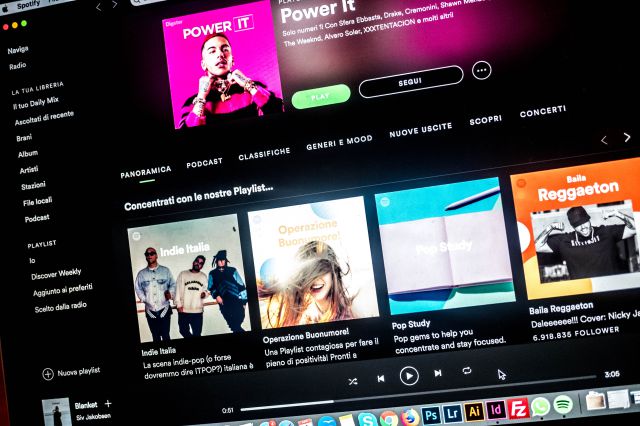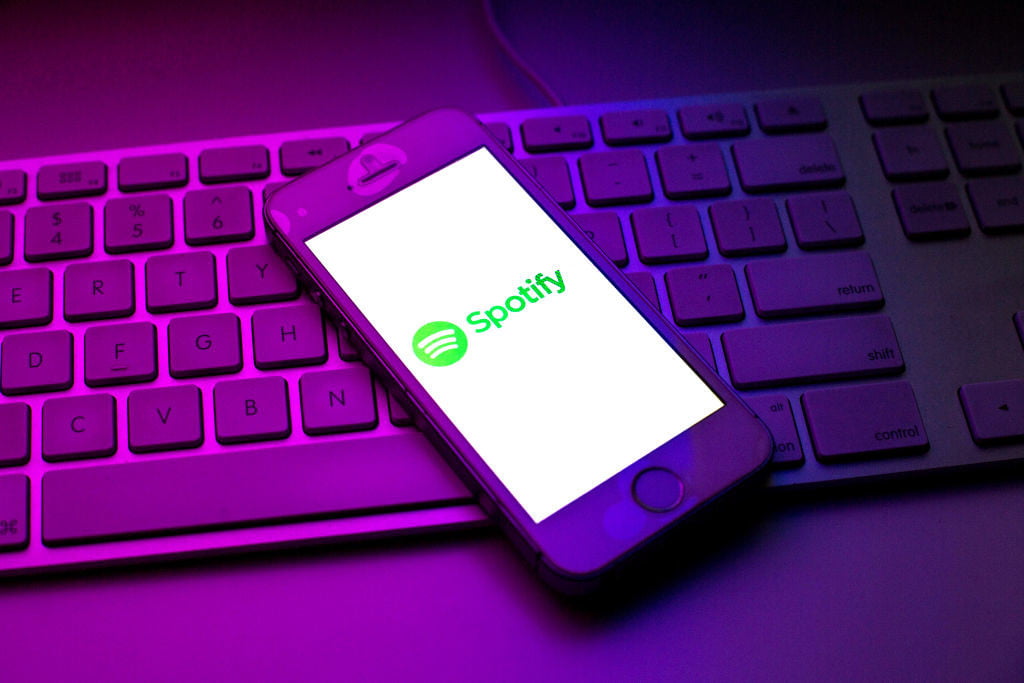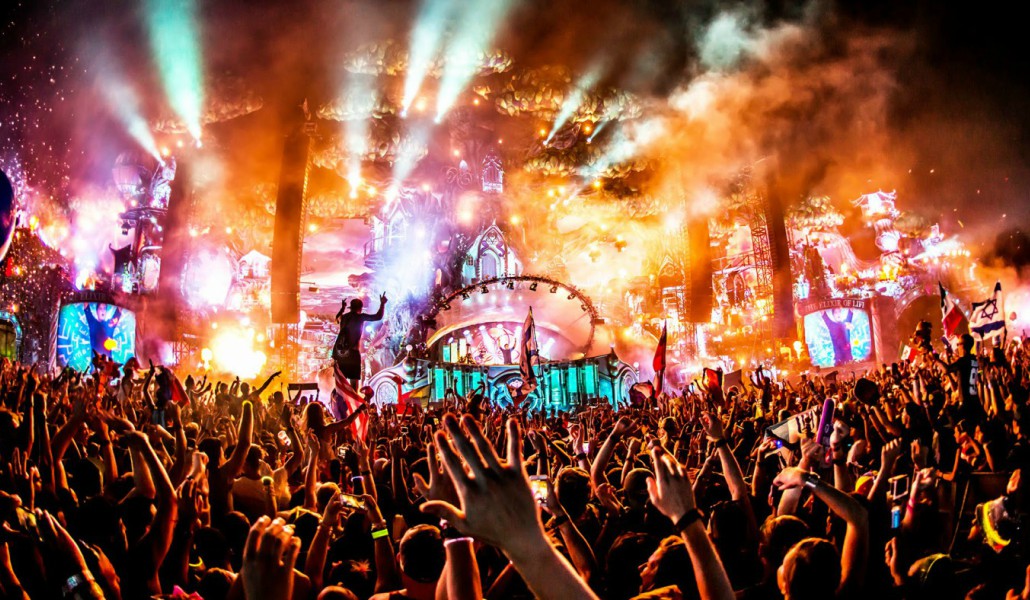Since the Egyptians invented the seven-note scales to date, music has not stopped evolving. The form of consumption and the way artists release new songs has changed, adapting to the digital age.
In 1999, the global recorded music industry had enjoyed a long period of expansion for more than a quarter of a century. By 1974, approximately 1 billion records had been sold worldwide, and by the end of the century this figure had more than tripled. In the late 1990s, Shawn Fanning (then a student at Northeastern University in Boston, United States), would unleash the turbulent process that would undermine the foundations of the music industry.
Shawn Fanning created and launched a file-sharing service called Napster that allowed users to download and share music without compensation to rights owners. Napster was immediately sued by the music industry and forced to discontinue its service. But instantly a whole series of increasingly sophisticated services took over. The aggressive methods, both legal and technical, used by the traditional music industry to stem the tide of online piracy services like Napster, Kazaa, LimeWire, Grokster, DC++ and The Pirate Bay were futile. As soon as one file-sharing service was taken to court and forced to cease operations, others appeared to take its place. By the end of 2013, sales of physical music (i.e. cassettes, CDs, vinyl) measured in units had fallen back to the relatively low figures of the early 1970s.
This vertiginous transformation of the music industry is a classic example of how an innovation upset the order of an entire industry and made its capabilities obsolete. The power and influence of the pre-internet music industry was fundamentally based on control of physical distribution. The internet has made physical music distribution increasingly irrelevant, and the major companies affected have had to redefine themselves to survive.

The dynamics of the 20th century music industry
To understand the dynamics of the industry, it is necessary to understand that the music industry as a whole lives from the creation and exploitation of intellectual property. Composers and lyricists create songs, lyrics and arrangements that are performed live on stage, recorded and distributed to consumers, or licensed for any other type of use, for example, as the sale of sheet music or as background music for others. media (movies, advertising, television, etc…). This basic structure has given rise to three core music industries: the record label, focused on recording music and distributing it to consumers; that of musical licences, which mainly grants licenses to companies for the exploitation of compositions and arrangements, and live music, focused on producing and promoting live shows, such as concerts, tours, etc.
In the pre-internet music industry, the recording industry was the strongest of the three and generated the most revenue. Most solo artists and bands who aspired to make it in the traditional music industry dreamed of being signed to a record label. A contract meant that the company would finance a studio recording, which would open the gates of the international record distribution system to the performer, something that was beyond the reach of most bands without a contract. The second sector, music licensing, was much smaller and more conventional than the recording industry sector. Music publishers, operating in this business, mostly worked with other companies in the industry, without any direct interaction with the public. His primary responsibility was to collect license fees when one of his songs was used in any context, and to ensure that such royalties were distributed fairly between songwriters and lyricists. The third sector, that of live music, generated its own income from the sale of concert tickets. Although live music has a long and rich history, during the 20th century it was always in the shadow of the recording industry. It was clear that the biggest revenue came from record sales, and record labels generally viewed concert tours as a means of promoting studio albums, regardless of whether or not the tour was profitable. Sometimes even the record label would help finance the tour. In this way, the bands could give all the scheduled concerts and promote their album, even if the ticket sales were a failure.
It was 10 years before the beginning of the 21st century, and the music industry was entrenched when the internet suddenly emerged and put the entire system in check. The short-term effects of the internet on the music industry were felt most notably in the distribution of recorded music. This means that while the record companies were highly threatened by the loss of control of distribution and online piracy, the other two sectors, in principle, were barely affected. In fact, while the labels have suffered over the last 25 years, the other two segments have gained in strength and presence. Casually; One of the main reasons is that, when one source of income decreases, the music industry has to reevaluate its other businesses and try to compensate for the losses of the record companies, through an increase in income from licenses and music live.

The internet has revolutionized the world of music at the end of the 20th century
The Internet has revolutionized everything and the music industry is not far behind, for 25 years willing to completely complicate the traditional music industry. The possibility of having millions of songs in a minimum space. The revolution of formats and the appearance of MP3 completely relegated cassette tapes and records. Beyond the form, the digitization of music implied a compulsory reinvention for the industry. The threats on the web were many and the content became practically free with the appearance of some platforms such as Napster. It was more than evident that, with the arrival of the Internet to music, the first point that noticed its effect was that of distribution.
However, after many years of fighting piracy, it finally seems that consumer habits have changed. People are willing to offer money for songs, only with the difference that now we no longer buy the music, but pay to listen to it legally. The birth of streaming arrives and, with it, new channels such as Spotify, YouTube Music, Amazon Music or Apple Music, among others. With them, in addition, a new world of possibilities opens up when it comes to measuring the impact of an artist beyond the numbers of their sales. Now, listening, downloading or the number of views of a video clip can put an artist or band at the top of music trends.
And then, what happens with the music creators? As expected, technology has done its thing, so much so that there are already algorithms capable of creating authentic musical success by themselves with tools like FlowMachines. The innovation leaves no doubt that the internet and music are constantly evolving together and make us wonder what music will look like in the future.
In these times; it is music licensing that has evolved to become the most profitable business in the music industry and is also often considered the most innovative and agile of the three listed above. And although the licensing sector is the most profitable in the music industry today, live music has been the one that has grown the most. There is a fairly simple explanation for why live music has undergone considerable expansion over the last 15 years. Quite simply, live music is easier to control than recorded music.
It is important to note that Apple (2003) was the first company to successfully create an online music sales and distribution service within the legal framework and did not operate in the music industry. He was able to convince the major record labels that music consumers would buy legally if they were offered a very easy-to-use service that allowed them to buy and download music for less than a dollar a song. The service was called the iTunes Music Store. In this sense, iTunes was a radical change in the music industry. It was the first online point of sale that could offer the music catalogs of the major labels, used a novel pricing model and allowed consumers to buy only the songs they really liked from each album.
On the other hand, iTunes can also be seen as an innovation that developed while leaving record label positions and power structures intact. Rights owners continued to control their work, and royalty structures per song submitted were predictable and transparent. Apple was correct in its prediction and the iTunes Music Store has been a huge success.
Under this context; music providers will continue to innovate and differentiate themselves from the competition by developing a more efficient and profitable model. For example; In recent years, numerous artists and composers have turned to the context-based model for the creative production of their musical works. Instead of just making protected productions of their works for the public to enjoy, they have designed services and uses that involve the listener in the creative process and allow fans to do things with their music. British artist Imogen Heap is an example of this trend. Heap shared his work with his fans, encouraging them to upload sounds, images and videos during the production of his latest album. He later used this material as inspiration and also included entire blocks of it in his songs.

What is the future of the music industry?
From 2020 to 2021 alone, music streaming accounted for 83% of industry revenue, according to the latest report released by the Recording Industry Association of America (RIAA).
Major streaming platforms Spotify and Apple Music topped the revenue chart, generating between them a total of $7 billion, with the average number of subscriptions (in the US) rising from 60.4 million to the 75.5 million users.
Also, today thanks to giants like YouTube, Spotify, Apple Music among many others, many artists have managed to make themselves known and gain their own audience.
On the other hand, each television commercial, each series or movie or each TikTok that uses a song by an artist or band is equivalent to royalty income (copyright, exploitation, mechanical licenses, etc.).
Now, the internet has globalized music and rather the physical format of record companies used to limit them in achieving more breadth of income. For example; a social network or a streaming service to listen to music. That is to say: record companies are making money from something that simply did not exist before; they have come to break the limitations imposed by the physical format itself.
The lucrative potential of the digital model is as great as the options and ways to impact users. TikTok is the great example. Just take a look at one of the latest viral challenges on the social network: #blindinglightschallenge, which uses the song "Blinding Lights" by The Weeknd. Over 17 million videos have been uploaded using the theme and if just one video is capable of receiving over 1.5 million likes (like this one), the power of dissemination is beyond question. And let's remember that, for each reproduction, there is income from rights, in addition.
Probably in the future we will see artists who decide not to sell their masters to the record companies, or to distribute the phonographic control of their work so that nobody has too much power over them. They may decide to have one company publish the album in one market and another in another, set up their own publisher, or distribute their work through independent aggregators. But the big labels are even reaching here: they are buying independent distributors like The Orchard (Sony) or Ingrooves (Universal).
For artists or bands, live shows through social networks or concerts or festivals continue to work and are almost synonymous with success and full capacity, but music sales have passed for a better life. Nowadays artists earn more money for their actions complementary to music. For example; some artists have launched their line of famous perfumes, as the pioneer Britney Spears did with two fragrances, then Justin Bieber, Shakira, Taylor Swift or One Direction with three colognes.
But the ways of making money do not end here. You also have to take into account copyrights, which are another sure source of income, along with licenses and fees for a song that plays in a movie, series, ad or video game. And do not forget to become the songwriter of other artists, taking part of the income, thus multiplying the profits.
Living today from music is only achieved by certain lucky ones who have known how to move well. The era of digitization and the internet has come to rethink among artists and record companies the way to continue earning money. The vast majority of a musician's income comes from concerts, television or movie licensing, and marketing.
The ways in which musicians receive income are varied:
- Sale of discs in their physical support. It is worth mentioning that there has been a certain comeback of vinyl.
- Digital sales
- Streaming music websites and apps (Spotify, Apple Music...)
- Concerts have been reinforced not only as a form of money as a musician but also to build loyalty and connect with their followers.
- Participation in festivals. Due to the appearance of Spotify, people have changed the way they understand music and prefer to spend a certain amount of money on a concert or festival ticket than spend money on a record.
- Marketing has diversified and perfected itself, encompassing many possibilities: t-shirts, caps, calendars, books, accessories.
- Ads and advertising. A wide variety of artists have been joining advertising campaigns related to products such as clothing, footwear or even colognes. That is, they earn income by sponsoring the products of the companies that hire them.
- Copyright, licenses and fees. Some songs can end up being part of movies, commercials, video games.
In conclusion; All these changes and the creation of the new world stage that musical innovation has brought about and the creation of new digital business models invite us to an infinite combination of possibilities. In which, the only thing that seems that we can guarantee with certainty, is that the music will continue to evolve and reinvent itself, but always accompanying us.
THANKS FOR READING, AND FOR YOUR COMMENTS ON THIS ARTICLE
